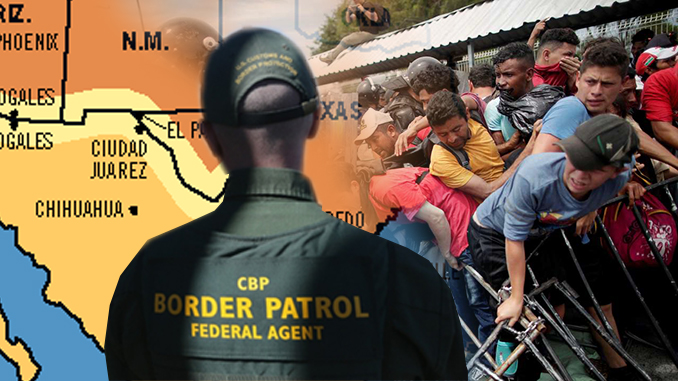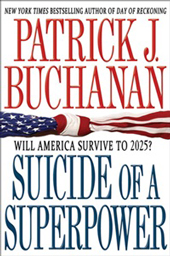
In a followup to last week’s stories on the Southern Border Crisis, American Free Press writer Mark Anderson reports on a CPB report of the high numbers of apprehensions in April alone. With nowhere left to hold unauthorized border crossers, the Border Patrol can’t handle any more illegal immigrants.
By Mark Anderson
DONNA, Texas—The U.S. Border Patrol now says that the newly built Donna, Texas “tent” facility, which is actually a semi-permanent structure south of that Hidalgo County town near the international bridge, has already exceeded its estimated 500-person capacity even though it was erected only one month ago.
If you read various newspapers from around the state and consult the Border Patrol, you find that, in this “non-crisis,” unauthorized border crossings have volcanically surged since 2019 began. The Border Patrol made 98,977 apprehensions for illegal border crossings in April, including 58,474 adults and children traveling together—nearly 100,000 people overall.
In the Rio Grande Valley sector, the four-county border area about which American Free Press reported in-depth in our previous edition, the Border Patrol apprehends about 1,600 people daily. A year ago, arrests totaled one-third of that number on most days, and even that would be a rather high influx.
The Border Patrol, as of this writing, had gotten to the point where it has more than 8,000 illegal immigrants in detention in this busiest of border sectors. That is more than double the Border Patrol’s current overall detention capacity in the 316-mile-wide sector, including the current Donna facility and at the Border Patrol’s own stations.
Rodolfo Karisch, a Rio Grande Valley Border Patrol spokesman, stated that the agency’s resources “are beyond a breaking point and has put border security at risk.”
As Border Patrol official Hector Escamilla stated at a McAllen speech covered in our previous edition, people from well over 40 nations, including from the Middle East, Africa, Asia, and Eastern Europe, are storming the border, adding considerable guesswork, time, and expense in determining who is coming to the U.S. and why—right when the Rio Grande Valley sector’s 3,100 Border Patrol agents constitute roughly half of the manpower needed to police the border in the current “non-crisis.”

Yet all the media does is quote people like John-Michael Torres, a spokesman for the group La Unión Del Pueblo Entero, who told the Texarkana Gazette that when the first “tents” were erected in Donna, and 796 miles to the west in El Paso, Trump was merely “using children and other vulnerable people to manufacture a crisis at the southern border.”
“The president cannot detain away the real humanitarian need of parents seeking safe ground and a future for their children,” moaned Torres. The activist is evidently just as clueless or manipulative as the media, neglecting to consider the root causes of this real crisis, in order to face the reality that open borders augmented with catch-and-release policies incentivize drug and human traffickers to continue uprooting the people of Central American countries, leading to a breakdown of those nations and the depletion of the core of their labor forces over time. Simply put, driving everyone to the U.S. is not humanitarianism.
AFP readers would do well to call their state and federal representatives and tell them of the Border Patrol’s announced goal of having some of its agents trained to process asylum claims right at the border to process people faster, reduce catch-and-release numbers, and speed up and increase deportations. From there, more immigration judges, much better border wall progress, and a far stricter policy in dealing with Mexico’s apparent complicity in this crisis, all are sorely needed right away.
Mark Anderson is AFP’s roving editor. Email him at [email protected].




